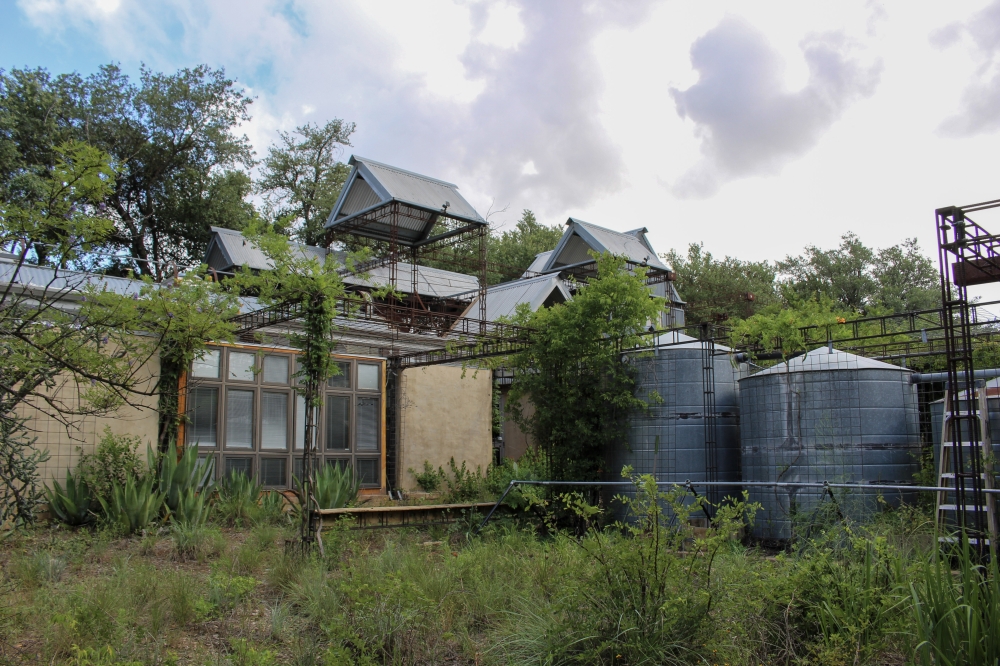The background
Regenerative agriculture is a practice focused on restoring one’s environment through promoting biodiversity and rebuilding soil, said Kiran Topiwala, owner at Nurture Nature Regenerative Landscaping.
Similar to xeriscaping, a landscaping approach focusing specifically on water conservation through planting native, drought tolerant species, regenerative agriculture takes the practice a step further by “being proactive in the restoration of the environment,” Topiwala said.
“We're just groups of people who care about the environment that want to see better stewardship of the land that we live on,” he said. “That way our wells don't dry off—we are able to retrofit our landscapes in a way that’s rehydrating land and working with Mother Nature.”
How it works
People can incorporate regenerative agriculture into their homes through “low tech” systems such as berms and swales, Topiwala said.
Berms are raised gardening mounds with deep swales in between each mound, with both typically retrofitted to the natural contour line of the ground.
During rain events, water will rush through the swales and feed into the berms, hydrating the soil, Topiwala said.
“This is a super simple, low tech solution to, “How can we build something that captures more water into the ground?” instead of just allowing the water to rush off with the top soil,” he said. “This results in us watering the gardens less. It results in healthier build up of soil, especially on the berms.”
Hays County resident and permaculturalist Annie Spade said incorporating native plant species can also be beneficial for the landscape, especially in times of drought.
Spade suggested using the following plants for shaded areas of the home, all of which are perennial, drought tolerant and deer resistant:
- Turks cap
- Chili pequin
- Beautyberry
- Flame acanthus
- Mistflower
- Lantana
- Skeleton leaf goldeneye
“That's the beautiful thing about native plants—they will naturalize,” she told Community Impact. “They will just live in the places that work for them, rather than restricting things into a particular bed or a particular place and forcing it—just kind of letting nature do its thing and the plants to grow where they can thrive.”
Spade said avoiding overmowing can also help encourage the growth of native grasses. She suggests to avoid mowing below 6 to 8 inches for bunch grasses as they have deep roots that funnel water down into the landscape and hold on to the soil.
Topiwala said one of the most important ways to get into regenerative agriculture is to become familiar with one’s own landscape, as each space can be different.
“It's really about people becoming involved on a deeper level with their own piece of land that they steward, the kinds of living systems that are in place there, and experimenting until you kind of start figuring out what works and what doesn't,” he said. “Just because my neighbor is growing a mango tree doesn't mean I'm going to be able to grow a mango tree, right?”
The bigger picture
Local Central Texas regions, from Central Austin, San Marcos, Dripping Springs, Bastrop and more, continue to face lengthy periods of drought.
Residents in areas that rely on local aquifers and face continued water demand can face additional issues with water access, as previously reported by Community Impact.
Despite recent drought improvements as of July 11, drought conditions are projected to persist for at least the next three months, according to data from the U.S. Drought Monitor.
Topiwala said an approach such as regenerative agriculture is one easy way to positively impact a stressed environment while also connecting with people.
“There's things that we can just do at home that you know will have amazing impacts on the microclimate of your local environment,” he said. “It’s a way for us to build community, get to know your neighbors, but also those are the people that you know are also facing the similar situations that you are. ... There's a lot that we can just do at a grassroots level and build that local sustainability and resilience that everyone's kind of looking for.”
One more thing
For larger-scale projects, Topiwala also works at Center for Maximum Potential Building Systems, or CMPBS, with co-founder Pliny Fisk. The center focuses on implementing sustainable designing and urban planning by creating prototypes and “tool kits” for people to use, from neighborhood residents to municipalities.

“When you’re in times of crisis like right now—wildfire, drought, we’re having crazy storms like thunderstorms and hail, tornadoes—what Pliny’s expertise is here at the center is about building prototypes that solve these kinds of problems,” he said.
He said the center’s work also shows what can be done on all scales, from small-scale neighborhoods to policymaking.
“This is what we can do on a local level in your own backyard, but also at a higher level as well when we come to organizing as a bioregion," he said.
Fisk said oftentimes finding solutions can be “right outside the window.”
“All you have to do is organize with the people and the resources that you have,” he said.





